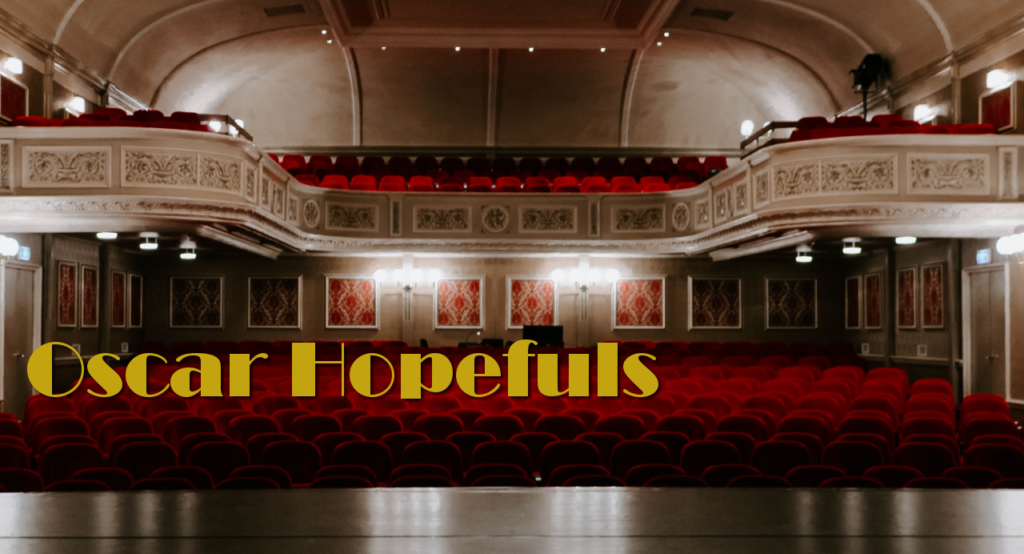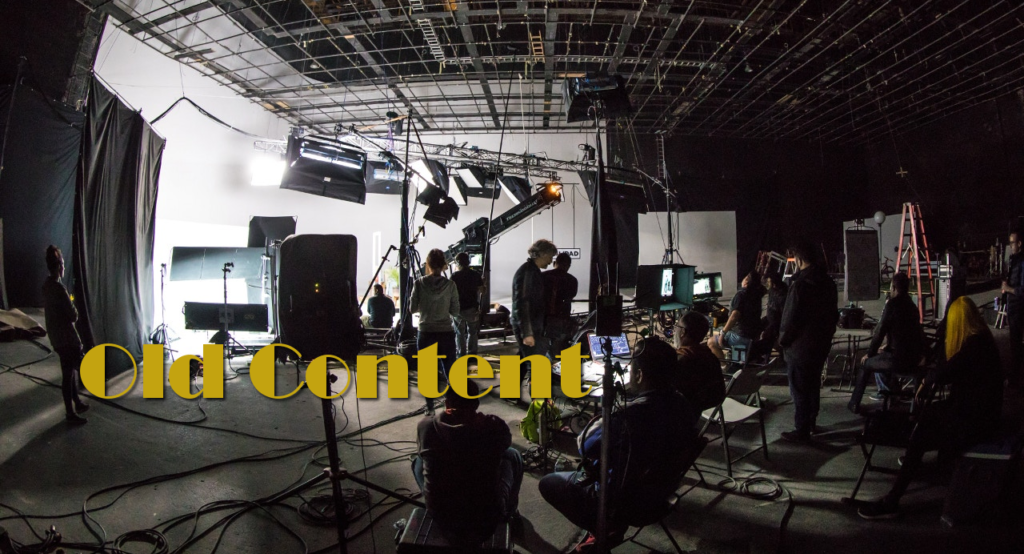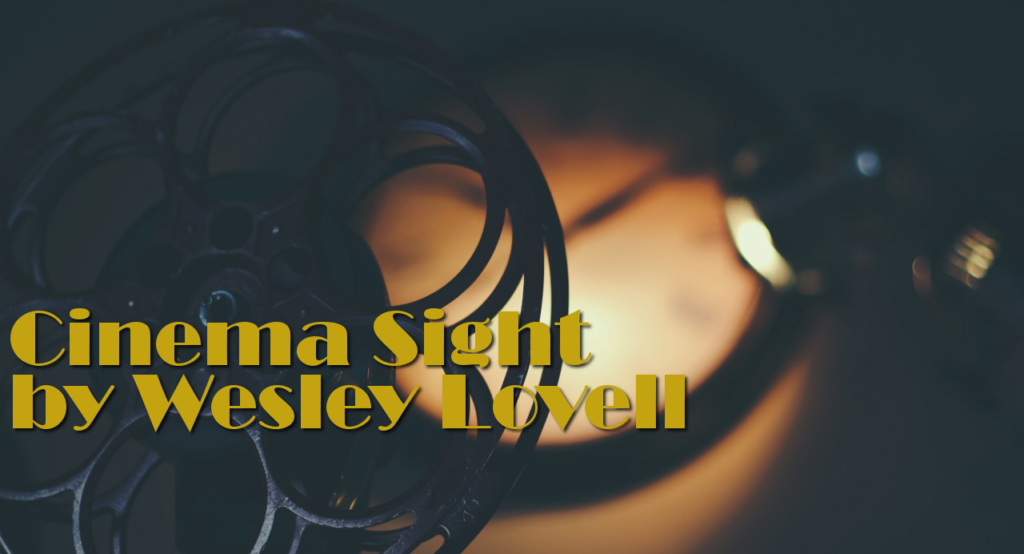
Christmas comes early on Blu ray with the release not only of the holiday classics, A Christmas Carol and It’s a Wonderful Life, but with the releases of 50th Anniverary Edition of North by Northwest, the long sought after release of Forrest Gump and Criterion’s first subscriber voted release, Howards End, as well.
Charles Dickens’ classic A Christmas Carol has been filmed many times but none more effectively than Brian Desmond-Hurst’s 1951 version with Alastair Sim, simply marvelous as a profoundly miserable Scrooge who is delightedly and delightfully transformed at film’s end. The Blu-ray disc, as was to be expected, offers the crispest blacks and whites we’ve ever seen for this film, but even better, delivers the dialogue and other sounds so immaculately we actually hear things we may have before. Not only Sim, but Mervyn Johns and Hermione Baddeley as the Crachits, Michael Hordern as Marley’s Ghost and Kathleen Harrison as Scrooge’s befuddled landlady provide the best interpretations of these characters the screen has ever given us.
From the late 1950s through the early 1970s Christmas Eve television programming in most markets included a showing of either the 1938 MGM version of A Christmas Carol with Reginald Owen or the definitive 1951 version discussed above, or both. Beginning in the mid-1970s after Frank Capra forget to renew the copyright to 1947’s It’s a Wonderful Life, that film fell into the public domain and local programmers started showing it on Christmas Eve instead of either version of the Dickens classic, both of which they would have had to pay rentals for.
The annual telecasts of It’s a Wonderful Life turned what had initially been a box office disappointment into a holiday tradition. Although it had been nominated for five Academy Awards including Best Picture, Actor (James Stewart) and Director (Capra), it took nearly thirty years for it to become a hit! Like A Christmas Carol, the crisp black and white cinematography looks better than ever and the immaculately reproduced soundtrack is crystal clear. In addition Stewart as the man who gets to see what things would have been like had he never been born, the film boasts marvelous performances from Donna Reed as his wife and Henry Travers as his guardian angel, Clarence, as well as such acting legends as Lionel Barrymore, Thomas Mitchell, Beulah Bondi, H.B. Warner and Gloria Grahame in pivotal supporting roles.
There is a Region B Blu-ray of Alfred Hitchcock’s 1935 masterwork, The 39 Steps, which was recently released in Great Britain, but Warner Bros.’ 50th Anniversary Edition of North by Northwest is the first Hitchcock film released in the format in North America. It looks and sounds more breathtaking than ever as we are pulled, hearts pounding, once again into the murder at the U.N., the attempted killing of Cary Grant with the crop duster and the climax across the face of Mount Rushmore. Grant, Eva Marie Saint and James Mason are at the top of their game.
Extras include the Ernest Lehman commentary from the standard DVD release as well as several vintage documentaries, a new documentary, The Master’s Touch: Hitchcock’s Signature Style and the superlative 2003 TCM documentary on Cary Grant’s life and films narrated by Jeremy Northam and Helen Mirren.
Two hours of new bonus features accompany the Blu-ray release of Robert Zemckis’ 1994 Oscar winner, Forrest Gump, but the real thrill is the film itself stunningly delivered in the best possible format. This film, which covers the most turbulent events of the second half of the 20th Century is a time capsule that means more to those who lived through the era than it does for those who came of age at the time of the film’s release or thereafter. In 1994 you were either a Forrest Gump or a Pulp Fiction fan. I was a Gump-er. Tom Hanks, in an Oscar nominated performance, Gary Sininse in an Oscar nominated one, Robin Wright, Sally Field, Mykelti Williamson and Haley Joel Osment are all as terrific as we remember.
Several months ago Criterion gave subscribers to its site a choice of several films to be re-mastered and released on Blu-ray. The 1992 Merchant-Ivory production of E.M. Forster’s Howards End was the resounding winner of that survey. It was an excellent choice. Not only is the film worth seeing again, it’s worth seeing in this superlative rendition which provides brilliant color detail missing in the rather lackluster standard DVD transfer. Loads of extras accompany the film, but the real treat is the film itself with the lived-in characterizations of Oscar nominated Anthony Hopkins and Vanessa Redgrave, Oscar winning Emma Thompson, Helena Bonham Carter, James Wilby and the rest of the cast bring Forster’s characters vividly to life.
It’s either feast or famine with DVD releases of classic films. This week we can feast on three newly released box sets: Sony’s (Columbia) Samuel Fuller Film Collection and Film Noir Classics, Vol. 1 as well as Universal’s Claudette Colbert Collection comprised of some of her Paramount films from the 30s and 40s.
Legendary writer-director Sam Fuller had a long career. The Samuel Fuller Collection is made up of seven films, four of which he wrote the screenplays for, one of which was taken from a novel he wrote and two which he himself directed.
Richard Dix and Fay Wray are stars of silent westerns whose careers come to a halt with the advent of talkies in 1937’s It Happened in Hollywood for which Fuller co-wrote the screenplay The highlight of the film is a party for a sickly boy put together for Dix by May Robson’s stand-in, played by Zeffie Tilbury. Doubles of everyone from Bing Crosby, Greta Garbo, Marlene Dietrich, Charlie Chaplin, Mae West, W.C. Fields, Joan Crawford and Irene Dunne to Victor McLaglen are given amusing bits to do.
Fuller wrote the stories for 1938’s Adventure in Sahara, a French Foreign Legion melodrama with Paul Kelly and 1943’s Power of the Press with Otto Kruger as an evil publisher. Both would be forgotten were it not for Fuller’s connection to them.
The equally legendary Douglas Sirk directed 1949’s Shockproof, co-written by Fuller. Neither Sirk nor Fuller were happy with the studio imposed ending which mutes the film’s overall sense of doom, but it is classic film noir nonetheless. Cornel Wilde has one of his better roles as the parole officer who falls for paroled murderess Patricia Knight, his then wife in real life.
Fuller’s award-winning novel, The Dark Page was the basis for 1952’s Scandal Sheet directed by Phil Karlson, a psychological thriller in which tabloid editor Broderick Crawford accidentally kills his ex-wife. The cover-up leads to an additional murder and the threat of several more. John Derek co-stars as Crawford’s star reporter and surrogate son. Donna Reed as the reporter who loves Derek but doesn’t trust Carwford, Henry O’Neill, Henry (Harry) Morgan and Rosemary DeCamp provide memorable supporting performances.
The best film of the lot is 1959’s The Crimson Kimono, which Fuller both wrote and directed. A murder mystery on the surface, the film’s real strength lies in its characterizations, particularly of Glenn Corbett and James Shigeta as former Korean war buddies, now cops in love with the same woman – Victoria Shaw who, surprisingly for the time it was made, prefers Japanese-American Shigeta. Anna Lee provides a memorable supporting performance.
Fuller also wrote and directed 1961’s Underworld U.S.A., a superb film noir in which Cliff Robertson infiltrates the mob in order to wreak vengeance on the men who murdered his father years earlier. Dolores Dorn co-stars.
The best known of Columbia’s Film Noir collection is the previously released 1953 classic, The Big Heat, directed by Fritz Lang. That’s the one in which cop Glenn Ford’s house is blown up by the mob with his wife (Jocelyn Brando) inside, the one in which Lee Marin disfigures Gloria Grahame by throwing a pot of hot coffee at her.
The oldest film in the collection is 1952’s The Sniper, directed by Edward Dmytrk which greatly benefits from location filming in San Francisco. The first Hollywood film to deal with the hunt for a serial killer, it still impresses today. Adolphe Menjou, Arthur Fanz, Marie Windsor and Richard Kiley star.
Phil Karlson’s 1955 heist film, 5 Agaisnt the House gives Kim Novak one of her first starring roles as a slinky dame who joins Guy Madison, Brian Keith, Kerwin Matthews, Alvy Moore and William Conrad as Korean war buddies who fall out over the planned robbery of a casino.
1958’s Murder by Contract, directed by Irving Lerner, is a tense psychological study of a hired assassin played by Vince Edwards.
It’s back to the streets of San Francisco for the last film in the collection, 1958’s The Lineup, directed by Don Siegel with Eli Wallach as the hit man pursued by cops Warner Anderson and Emile Meyer. The chase scene through the then unfinished Embarcadero Freeway anticipates Bullitt by a decade.
Claudette Colbert starred in sixty films made mostly in the 1930s and 40s. Universal, which owns the rights to pre-1950 Paramount films has finally put together six of her best remembered films in one package.
Colbert’s effervescent charm is nicely on display in 1933’s Three-Cornered Moon but this early screwball comedy, directed by Elliot Nugent, really belongs to Mary Boland as the ditzy mother of a once wealthy clan that must now find jobs to support themselves. Richard Arlen and Wallace Ford co-star.
The second of her seven films opposite Fred MacMurray, 1937’s Maid of Salem, directed by Frank Lloyd, provides Colbert with one of her best dramatic roles. It’s the only non-comedy in the collection.
The first, and in many ways, the best of several films made over the decades about the Salem witch trials, Colbert as the title character and MacMurray as her fiancé are the nominal leads in the film which provides juicy character roles for the likes of Bonita Granville, Harvey Stephens, Gale Sondergaard, Beulah Bondi, Sterling Holloway, Donald Meek, Louise Dresser, Zeffie Tilbury and Madame Sul-Te-Wan. Granville, in one of her patented child monster roles, all but steals the film. At the time of its release in March, 1937, Granville, Sondergaard and Bondi were all nominees for the first ever supporting actress Oscar for their roles in 1936 films.
Colbert juggles Melvyn Douglas, Robert Young and Lee Bowman in 1937’screwball comedy, I Met Him in Paris, which actually takes place in Sun Valley, Idaho doubling for a Switzerland ski resort. It was directed by Wesley Ruggles.
Gary Cooper and Colbert have their only on-screen pairing in Ernest Lubitsch’s Bluebeard’s Eighth Wife, scripted by Billy Wilder and Charles Brackett. He plays a much married millionaire she marries for money but comes to love in the end. Edward Everett Horton is her impoverished titled father and David Niven is her former fiancé. Though not considered one of Lubitsch’s major works, the film nevertheless has aged quite well.
It’s back to Fred MacMurray in Mitchell Leisen’s amiable 1943 charmer, No Time for Love, in which she’s a reporter and he’s a contractor digging a tunnel under the Hudson River. Ilka Chase, Richard Haydn and June Havoc co-star.
Colbert and MacMurray are re-united for 1947’s box office smash, The Egg and I, directed by Chester Erskine. This is the only film previously available on commercial DVD in the U.S., having been part of a Ma and Pa Kettle box set. The hillbilly family led by Oscar nominee Marjorie Main and Percy Kilbride was introduced in this film about transplanted New Yorkers.
The Warner Archive Collection has released Colbert’s last film, the made-for-TV 1987 two part mini-series, The Two Ms. Grenvilles for which the actress won an Emmy nomination and a Golden Globe opposite Ann-Margret as her murderess daughter-in-law. Both actresses are sublime.


















Leave a Reply